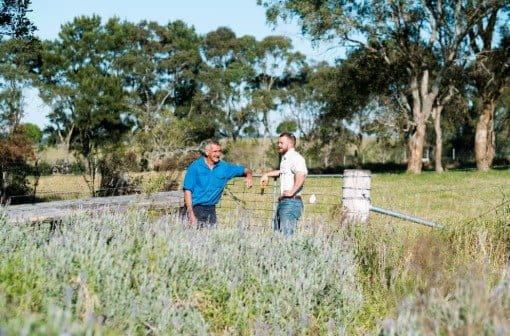"We know that young adulthood is obviously a challenging time, where we do see mental distress rates compound.”—Dr Kate Lycett, Australian Unity Wellbeing Index lead researcher, Deakin University
Key points
-
The Australian Unity Wellbeing Index shows that, overall, Australians’ levels of mental distress have decreased. However, young Australians still have significantly higher levels of stress, anxiety and depression than older age groups.
-
Young Australians were particularly affected by the pandemic, which was a major catalyst for this mental health crisis. They also continue to face major challenges across housing, education costs and future employment.
-
If you think that a young person in your life is struggling with their mental health, it’s important for them to seek help early. A good starting point is an appointment with their GP, who can provide advice and referrals.
Earlier this year, the Australian Bureau of Statistics released a study that painted a bleak picture of the nation’s mental health. Examining the years from 2020 to 2022—a period that was admittedly defined globally by COVID-19—the data found that one in five Australians (21.5 percent) had experienced a mental disorder in the previous 12 months. But it was the figures for young adults that were truly shocking. Among 16- to 24-year-olds, some 38.8 percent of respondents had experienced a mental disorder in the past year.
It's a sobering statistic that reflects the findings from this year’s Australian Unity Wellbeing Index. A 22-year study into the wellbeing of Australians, conducted in partnership with Deakin University, the Wellbeing Index found that young Australians are reporting much higher levels of mental distress—anxiety, stress and depression—than the rest of the Australian population.
“We know that young adulthood is obviously a challenging time, where we do see mental distress rates compound,” says lead researcher Dr Kate Lycett, from Deakin University's School of Psychology. “It's a time of life-changing transitions, when mental health problems can become exacerbated.”
.jpg?h=650&w=1200&hash=36F133C62250429D4F1C9963EA4C9B90)
The impact of the pandemic
Being a young person has never been easy—and the current generation also faces the additional challenges of constant social media pressure and growing fears over climate change. But Deakin University’s Associate Professor Delyse Hutchinson, a clinical psychologist, explains that one of the major catalysts of this decline in mental health among young people was COVID-19.
“Young people were particularly impacted during periods of social restrictions. They had significant disruptions to their schooling and education, as well as their social involvement and connections, which are central to adolescent and young adult health and wellbeing,” she says.
Sign up for wellbeing news
Get real wellbeing news, information and tips straight to your inbox.
Australians’ improving mental health
Thankfully, the pandemic is now largely behind us and there are promising signs that things are beginning to improve. In fact, this year’s Wellbeing Index found that, across Australians as a whole, anxiety, stress and depression actually fell from last year’s high levels.
This drop is consistent with what Delyse has witnessed in her clinical psychology practice.
“One of the things I’ve noticed clinically is a sense of slow and steady psychological recovery from the impacts of the COVID-19 pandemic across 2019 to 2021,” she says. “Clinically, people are still processing the challenges and impacts of the pandemic on their lives. However, I’m observing a feeling that life is getting back to normal, or at least a ‘new normal’, over the past 12 months.”
This improvement is particularly welcome in light of findings from this year’s research, which showed that people with the highest feelings of anxiety, stress and depression had notably lower personal wellbeing compared to the other respondents. It’s a sobering reminder that your mental health can have a huge impact across your life as a whole.
A different story for young Australians
Unfortunately, as the Wellbeing Index shows, people aged 18 to 35 are still have far higher levels of mental distress than older age groups. So what are the factors contributing to these higher levels of anxiety, stress and depression reported by young people?
“While the impacts of the pandemic have eased over the past 12 months, young people continue to face other major challenges,” says Delyse. “Moving out of home has become increasingly difficult, as rental and property prices have skyrocketed to a level that many young people cannot afford.
“Concerns about debt associated with post-secondary education are increasingly being reported by young people, as well as challenges finding stable employment. They also report real concerns about environmental change and international conflict.”
These, of course, are all big problems that are unlikely to be solved any time soon. Given the scale and complexity of such challenges, how should we try and support young people if they do find themselves facing a mental health challenge?
.jpg?h=650&w=1200&hash=E6CADA879FB6E896F8AF48A8E41D9B1B)
The power of support
Delyse highlights one positive development: mental health problems are now more widely understood and accepted in the community than ever before. That’s important because timely intervention can make a real difference to stop problems from spiralling.
“We know that the earlier we can support people who may be experiencing difficulties, the better the outcome in the long term, as we can often prevent more serious, clinical issues from developing,” says Delyse. “So where possible, I strongly encourage family, friends and others concerned about a young person’s mental health to seek help early.”
Discussing potential mental health issues with someone you think might be struggling can understandably be a highly delicate matter. To navigate it with more confidence, Delyse recommends checking Beyond Blue’s advice on how to talk to someone you are concerned about.
Delyse also suggests considering options for treatment. “When issues worsen and there is concern about a clinical problem, such as a mood disorder like depression or anxiety, there are many effective treatments available that can help young people with these challenges.
“Often a good place to start is with a general check-up with a family GP, who can provide advice and referral support to appropriate clinical services and treatment providers.”
While the statistics about young Australians’ mental health are alarming, there are many things we can do to help the young people in our lives. Checking in with the young people in your life is often an important first step.
If this article has raised concerns, remember help is available. Call Lifeline on 13 11 14, Beyond Blue on 1300 22 4636, or if it is an emergency, call 000.
Disclaimer: Information provided in this article is of a general nature. Australian Unity accepts no responsibility for the accuracy of any of the opinions, advice, representations or information contained in this publication. Readers should rely on their own advice and enquiries in making decisions affecting their own health, wellbeing or interest. Interviewee titles and employer are cited as at the time of interview and may have changed since publication.
.jpg)

.jpeg)
